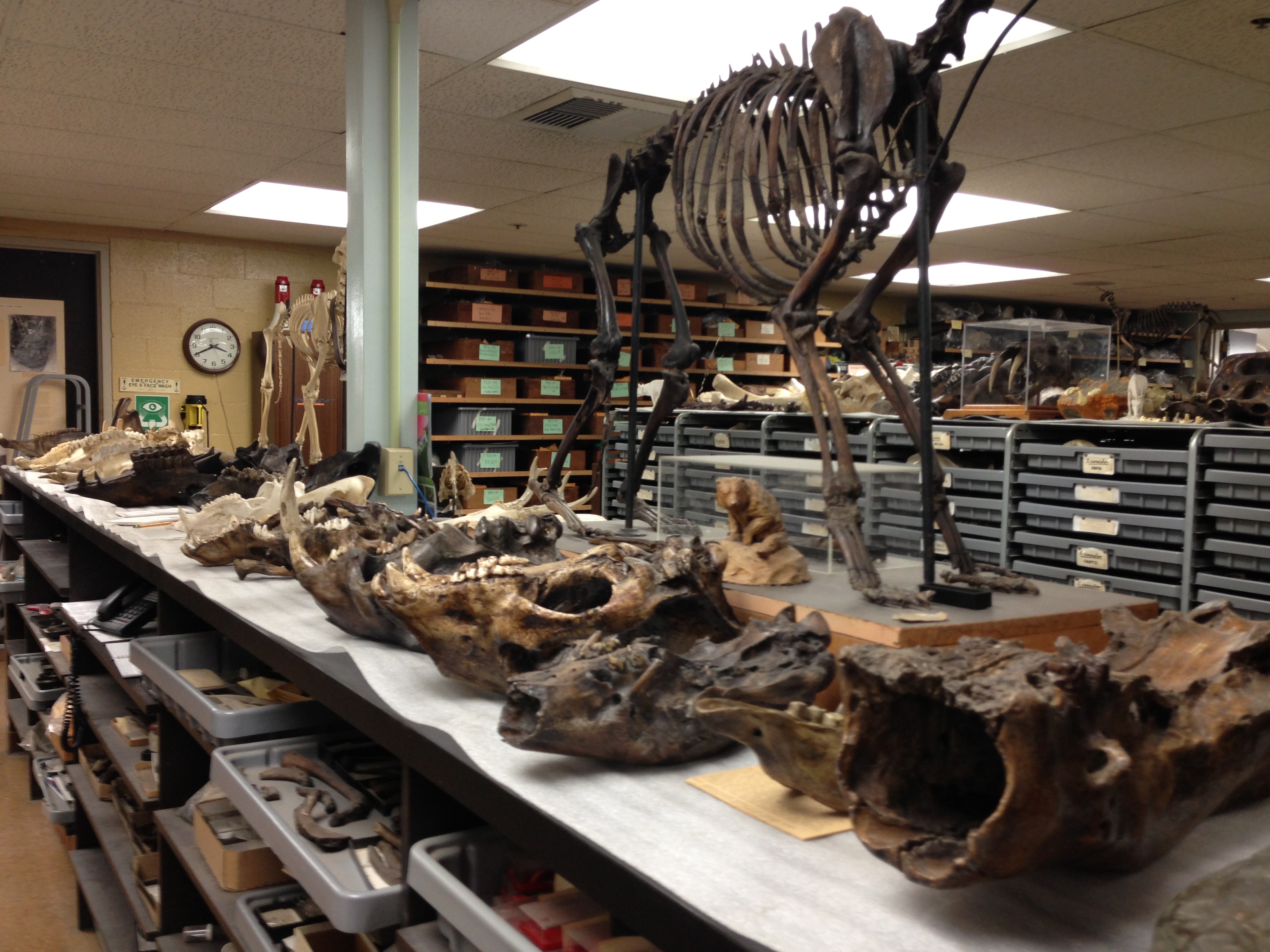Time Traveling at La Brea Tar Pits
The SciFri staff visited La Brea Tar Pits, which is celebrating 100 years of excavation.

When you think of Los Angeles, archaeology probably doesn’t first come to mind (unless you count Hollywood’s Indiana Jones). But one of the world’s most famous fossil locales is right there, along Miracle Mile. It’s La Brea Tar Pits (the associated Page Museum houses more than three million Ice Age specimens), and this week, museum-goers are celebrating 100 years of excavation there. (Click here for a detailed history and here for a timeline of Pleistocene animals.)
This past August, some of the SciFri staff and I had a chance to visit La Brea, and boy, what a place. It oozes with (smelly) history, and we were lucky to time travel with John M. Harris, Ph.D., the Natural History Museum of Los Angeles County’s director of Vertebrate Studies. The pictures here don’t do La Brea justice, but hopefully they’ll give you an idea of what’s there.
The photo above shows part of a Columbian mammoth, moniker: Zed. Zed was discovered as part of Project 23, the name given to a bunch of recently unearthed fossils. Harris says that the fossil’s exposed teeth indicate that Zed was a male in his late forties when he died. What got him? Probably soft tissue injuries sustained 37,000 years ago during a fight for a mate. That’s right, Zed died for a girl. While Zed’s grave was a stream bed rather than an asphalt seep, “his skull is leaking asphalt and many (but not all) of his bones are impregnated with asphalt,” according to Harris, “The asphalt was probably floating on the surface of the river and wicked into some of the bones of this skeleton.”
Here, John Harris and I are looking at several types of bones from Project 23. The large bones at the back of the deposit are from bison, he says, while the smaller bones at the front are a mixture of dire wolf, coyote, and bird bones. The spaces between the larger bones have revealed a number of lizard, snake, rabbit, rodent, and insect fossils. All of the fossils in this deposit are older than 42,000 years, according to Harris.
This is the “Pit 91 excavation site,” which was excavated to recover small fossils—snails, insects, rodents, plants, that sort of thing—that occur in what Harris describes as “the asphaltic matrix surrounding the larger bones.” Excavation is now down to 14 feet below the surface of the ground, according to Harris. The red flag marks a Harlan’s ground sloth pelvis. The blue flag points to a horse radius. Most of the fossils here are about 27,000 years old and help us understand what habitats were around in southern California at the time, says Harris.
Ira Flatow is the founder and host of Science Friday. His green thumb has revived many an office plant at death’s door.